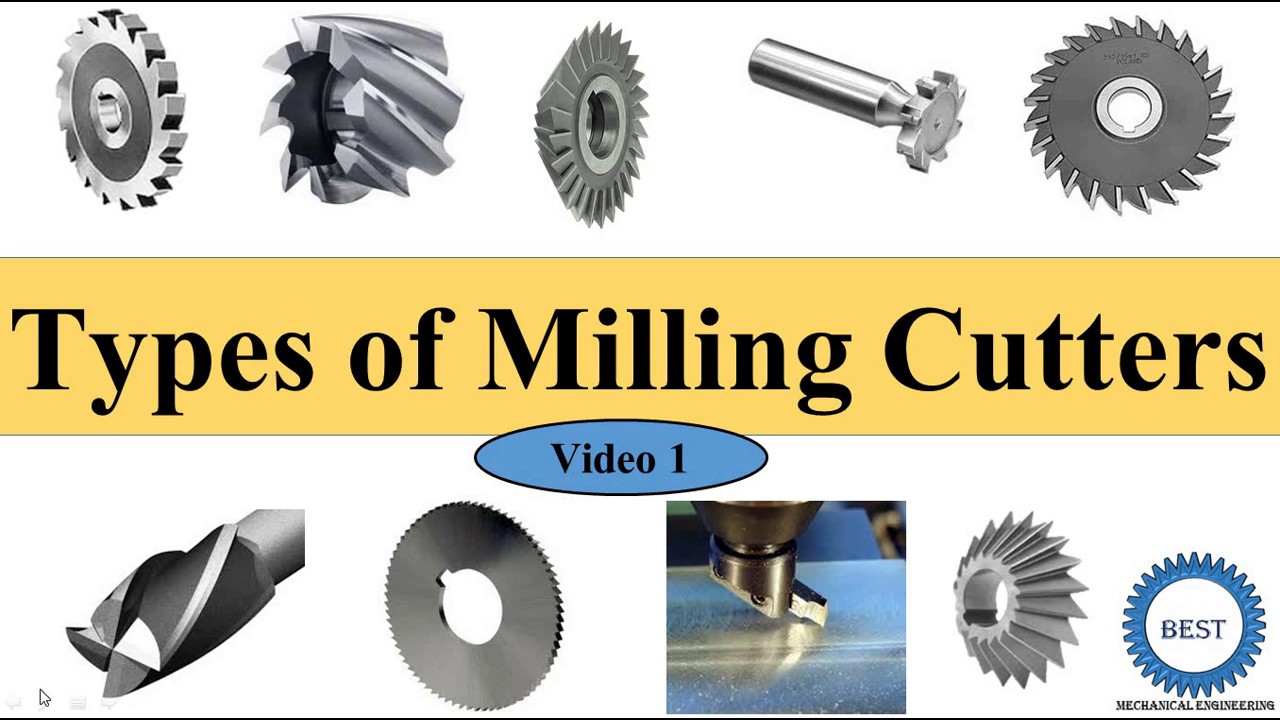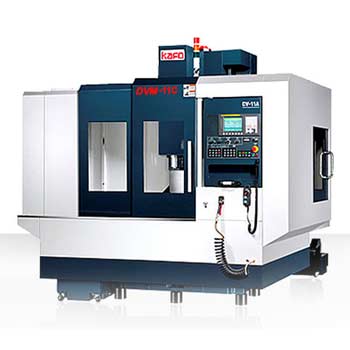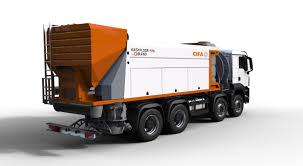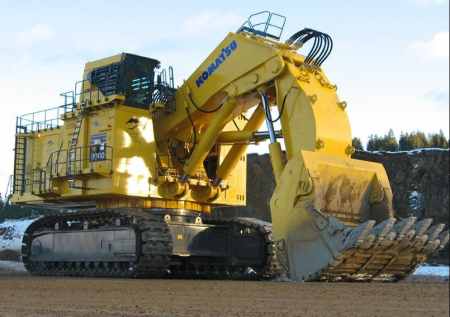Global Forum For Indurstrial Devlopment is SPONSORED BY ICO INDIA
- MP Society Registration (Act. 1973 No. 44) 03/27/01/21857/19 (MSME Forum Established Since-2009)

Machine, device, having a unique purpose, that augments or replaces human or animal effort for the accomplishment of physical tasks. This broad category encompasses such simple devices as the inclined plane, lever, wedge, wheel and axle, pulley, and screw (the so-called simple machines) as well as such complex mechanical systems as the modern automobile. The operation of a machine may involve the transformation of chemical, thermal, electrical, or nuclear energy into mechanical energy, or vice versa, or its function may simply be to modify and transmit forces and motions. All machines have an input, an output, and a transforming or modifying and transmitting device. White semi truck on the Highway. Truck, lorry, motor vehicle to carry freight or goods or perform special services. Cab, carrier, semis trucks. BRITANNICA QUIZ Machinery and Manufacturing From drilling holes and moving freight to car engines and their production, tinker with these questions and test your knowledge of machinery and manufacturing in this quiz. Machines that receive their input energy from a natural source, such as air currents, moving water, coal, petroleum, or uranium, and transform it into mechanical energy are known as prime movers. Windmills, waterwheels, turbines, steam engines, and internal-combustion engines are prime movers. In these machines the inputs vary; the outputs are usually rotating shafts capable of being used as inputs to other machines, such as electric generators, hydraulic pumps, or air compressors. All three of the latter devices may be classified as generators; their outputs of electrical, hydraulic, and pneumatic energy can be used as inputs to electric, hydraulic, or air motors. These motors can be used to drive machines with a variety of outputs, such as materials processing, packaging, or conveying machinery, or such appliances as sewing machines and washing machines. All machines of the latter type and all others that are neither prime movers, generators, nor motors may be classified as operators. This category also includes manually operated instruments of all kinds, such as calculating machines and typewriters. In some cases, machines in all categories are combined in one unit. In a diesel-electric locomotive, for example, the diesel engine is the prime mover, which drives the electric generator, which, in turn, supplies electric current to the motors that drive the wheels.

Machines can be simple, like a lever or pulley, or they can be more complex, like a computer or an automobile. The main purpose of a machine is to make things easier for people, like lifting and moving heavy objects around, working out a mathematical equation or even ordering food from a restaurant.
A machine is any physical system with ordered structural and functional properties. It may represent human-made or naturally occurring device molecular machine that uses power to apply forces and control movement to perform an action. Machines can be driven by animals and people, by natural forces such as wind and water, and by chemical, thermal, or electrical power, and include a system of mechanisms that shape the actuator input to achieve a specific application of output forces and movement. They can also include computers and sensors that monitor performance and plan movement, often called mechanical systems.
Wheel: The wheel is an important early machine, such as the chariot. A wheel uses the law of the lever to reduce the force needed to overcome friction when pulling a load. To see this notice that the friction associated with pulling a load on the ground is approximately the same as the friction in a simple bearing that supports the load on the axle of a wheel. However, the wheel forms a lever that magnifies the pulling force so that it overcomes the frictional resistance in the bearing.

A mechanical system manages power to accomplish a task that involves forces and movement. Modern machines are systems consisting of (i) a power source and actuators that generate forces and movement, (ii) a system of mechanisms that shape the actuator input to achieve a specific application of output forces and movement, (iii) a controller with sensors that compare the output to a performance goal and then directs the actuator input, and (iv) an interface to an operator consisting of levers, switches, and displays. This can be seen in Watt's steam engine in which the power is provided by steam expanding to drive the piston. The walking beam, coupler and crank transform the linear movement of the piston into rotation of the output pulley. Finally, the pulley rotation drives the flyball governor which controls the valve for the steam input to the piston cylinder.
The adjective "mechanical" refers to skill in the practical application of an art or science, as well as relating to or caused by movement, physical forces, properties or agents such as is dealt with by mechanics.[49] Similarly Merriam-Webster Dictionary[50] defines "mechanical" as relating to machinery or tools

The mechanism of a mechanical system is assembled from components called machine elements. These elements provide structure for the system and control its movement. The structural components are, generally, the frame members, bearings, splines, springs, seals, fasteners and covers. The shape, texture and color of covers provide a styling and operational interface between the mechanical system and its users. The assemblies that control movement are also called "mechanisms."[51][54] Mechanisms are generally classified as gears and gear trains, which includes belt drives and chain drives, cam and follower mechanisms, and linkages, though there are other special mechanisms such as clamping linkages, indexing mechanisms, escapements and friction devices such as brakes and clutches. The number of degrees of freedom of a mechanism, or its mobility, depends on the number of links and joints and the types of joints used to construct the mechanism. The general mobility of a mechanism is the difference between the unconstrained freedom of the links and the number of constraints imposed by the joints. It is described by the Chebychev-Grübler-Kutzbach criterion.
The dynamic analysis of machines begins with a rigid-body model to determine reactions at the bearings, at which point the elasticity effects are included. The rigid-body dynamics studies the movement of systems of interconnected bodies under the action of external forces. The assumption that the bodies are rigid, which means that they do not deform under the action of applied forces, simplifies the analysis by reducing the parameters that describe the configuration of the system to the translation and rotation of reference frames attached to each body.[64][65] The dynamics of a rigid body system is defined by its equations of motion, which are derived using either Newtons laws of motion or Lagrangian mechanics. The solution of these equations of motion defines how the configuration of the system of rigid bodies changes as a function of time. The formulation and solution of rigid body dynamics is an important tool in the computer simulation of mechanical systems.

The dynamic analysis of a machine requires the determination of the movement, or kinematics, of its component parts, known as kinematic analysis. The assumption that the system is an assembly of rigid components allows rotational and translational movement to be modeled mathematically as Euclidean, or rigid, transformations. This allows the position, velocity and acceleration of all points in a component to be determined from these properties for a reference point, and the angular position, angular velocity and angular acceleration of the component.

This Machine Learning tutorial provides basic and intermediate concepts of machine learning. It is designed for students and working professionals who are complete beginners. At the end of this tutorial, you won’t be an expert at Machine Learning but you will be able to make machine learning models that can perform complex tasks such as predicting the price of a house or recognizing the species of an Iris from the dimensions of its petal and sepal lengths. If you are not a complete beginner and are a bit familiar with Machine Learning, I would suggest starting with subtopic eight i.e, Types of Machine Learning.

machinery (of something) the machinery of government machinery (for doing something) There is no machinery for resolving disputes. The bumblebee has developed complex machinery for collecting pollen. They are faced with the task of dismantling the state machinery in order to create more democratic structures.In more general, commonly used, contexts, the plural form will also be machinery. However, in more specific contexts, the plural form can also be machinery e.g. in reference to various types of machinery or a collection of machinery.